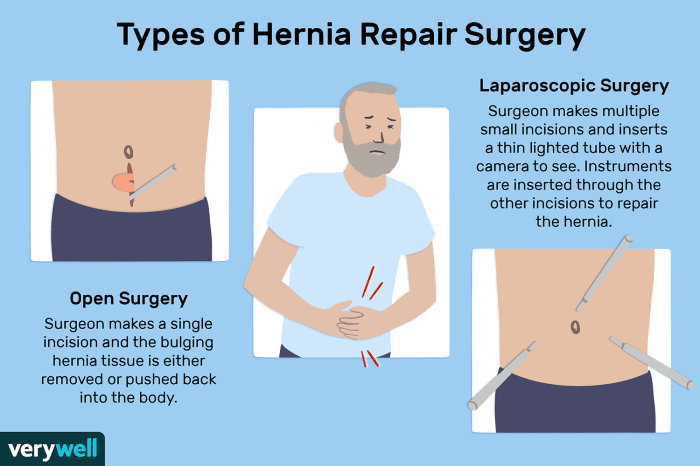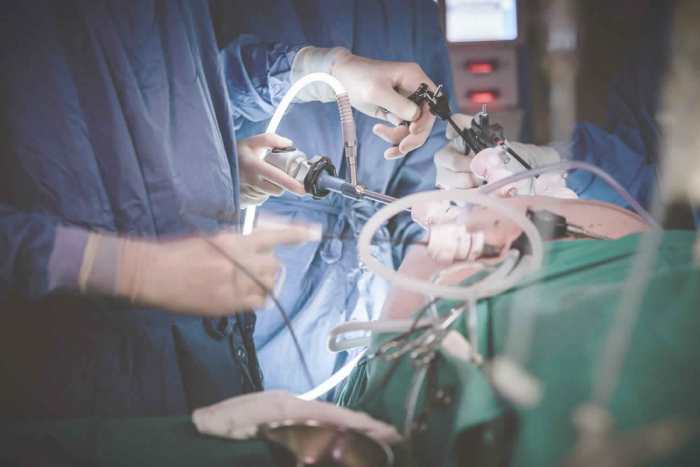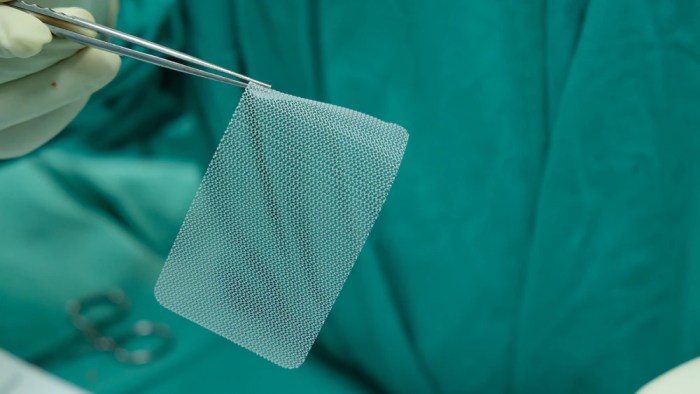A herniorrhaphy using mesh is coded with which root operation – Root Operation Coding for Herniorrhaphy with Mesh delves into the intricate world of medical coding, guiding readers through the complexities of assigning the appropriate root operation code for herniorrhaphy procedures involving mesh. This comprehensive analysis unravels the nuances of CPT coding, shedding light on the significance of accurate documentation and the application of modifiers to ensure optimal reimbursement.
As we delve into the intricacies of herniorrhaphy coding, we will explore the fundamental concept of root operations, identifying the specific code that serves as the foundation for accurate CPT assignment. Furthermore, we will examine the role of modifiers in capturing the unique circumstances of each procedure, ensuring appropriate reimbursement and reflecting the complexity of the surgical intervention.
CPT Coding for Hernia Repair with Mesh: A Herniorrhaphy Using Mesh Is Coded With Which Root Operation

The Current Procedural Terminology (CPT) coding system provides specific codes for herniorrhaphies with mesh. These codes are used to report the procedure to insurance companies and other payers.
When performing a herniorrhaphy with mesh, the surgeon typically uses a synthetic mesh to reinforce the weakened abdominal wall and prevent the hernia from recurring. The type of mesh used and the location of the hernia determine the specific CPT code that is assigned.
CPT Codes for Different Types of Herniorrhaphies with Mesh, A herniorrhaphy using mesh is coded with which root operation
- 49505:Inguinal hernia repair with mesh, unilateral or bilateral
- 49506:Femoral hernia repair with mesh
- 49520:Umbilical hernia repair with mesh, diameter 5 cm or less
- 49521:Umbilical hernia repair with mesh, diameter greater than 5 cm
- 49522:Epigastric hernia repair with mesh
Root Operation for Hernia Repair with Mesh

In medical coding, the root operation refers to the primary surgical procedure that is performed. For a herniorrhaphy with mesh, the root operation is hernia repair.
The root operation is important because it determines the appropriate CPT code. For example, the CPT code for an inguinal hernia repair with mesh is 49505, which is based on the root operation of hernia repair.
Modifiers for Hernia Repair with Mesh
Modifiers are used to indicate specific circumstances or variations in a procedure. The following modifiers are commonly used for herniorrhaphies with mesh:
- -58:Staged or related procedure
- -59:Distinct procedural service
- -LT:Left side
- -RT:Right side
For example, if a surgeon performs an inguinal hernia repair with mesh on the left side, the CPT code would be 49505-LT.
Documentation Requirements for Hernia Repair with Mesh

Accurate and complete documentation is essential for proper coding and reimbursement of hernia repair with mesh. The following information should be included in the medical record:
- The type of hernia
- The location of the hernia
- The size of the hernia
- The type of mesh used
- Any complications or comorbidities
This information can be used to assign the appropriate CPT code and modifiers, and to ensure that the procedure is reimbursed correctly.
Commonly Asked Questions
What is the root operation for a herniorrhaphy using mesh?
The root operation for a herniorrhaphy using mesh is typically 49560, Repair inguinal hernia, open.
How do modifiers affect the coding for a herniorrhaphy using mesh?
Modifiers such as -58 (staged procedure), -59 (distinct procedural service), and -LT/-RT (left/right side) can be used to capture the complexity and laterality of the procedure, influencing reimbursement.
What are the essential documentation requirements for a herniorrhaphy using mesh?
Accurate documentation should include the type of mesh used, the size of the hernia, any complications encountered, and any comorbidities present, ensuring appropriate coding and reimbursement.